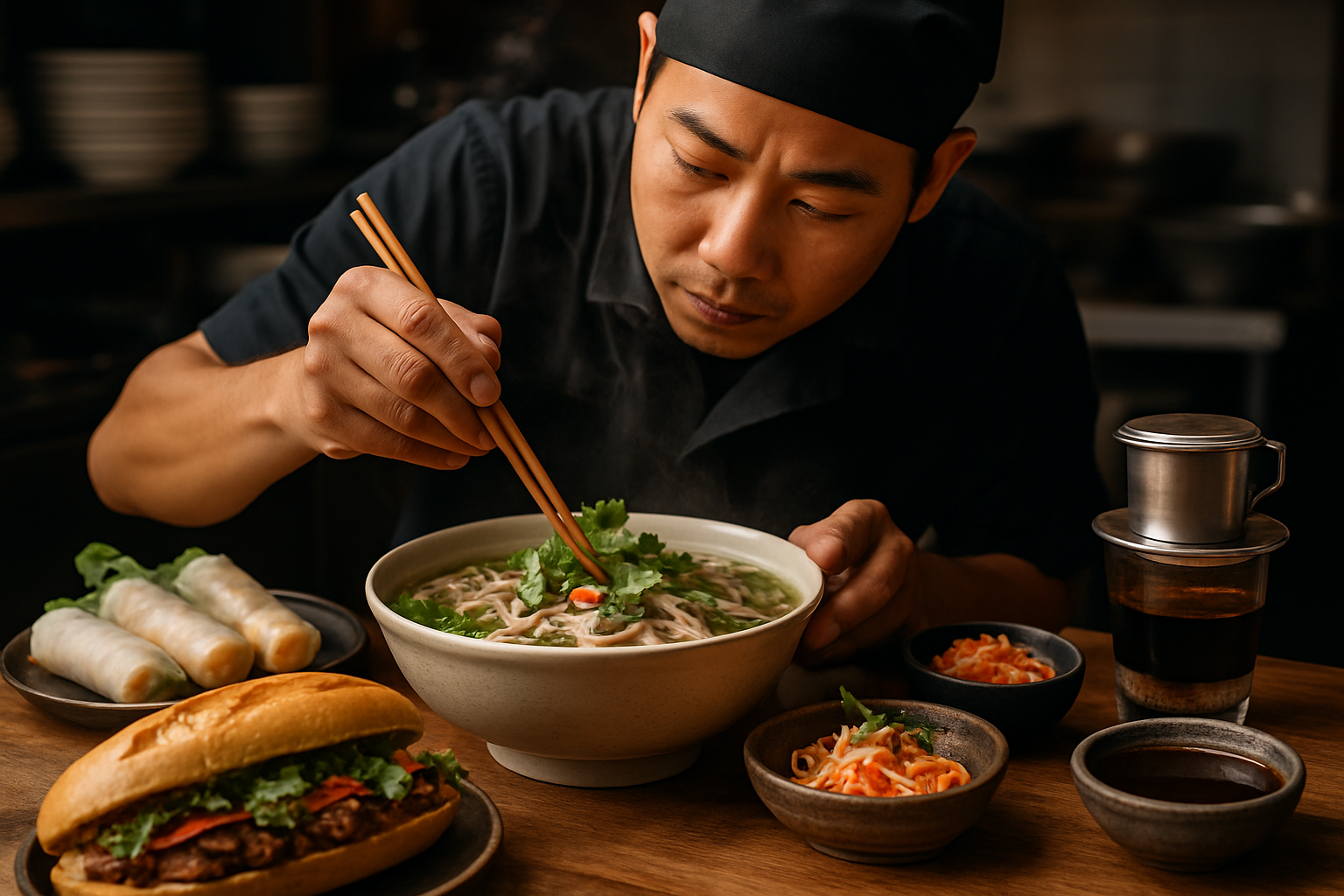Noodle Nirvana: Slurping Through Asia's Diverse Noodle Scene
Embark on a tantalizing journey through Asia's vibrant noodle landscape, where each slurp tells a story of culture, tradition, and culinary innovation. From the bustling streets of Tokyo to the hidden gems of Hanoi, we'll explore the mesmerizing world of noodles that captivates food lovers worldwide. Get ready to dive into a bowl of pure comfort and discover the endless possibilities that await in this noodle paradise.

Ramen Revolution: Beyond the Basic Bowl
Ramen has taken the world by storm, evolving far beyond its humble instant noodle origins. Today, ramen shops are pushing the boundaries of flavor and presentation, offering innovative twists on this beloved dish. Fusion ramen combines traditional Japanese techniques with global influences, resulting in creations like tom yum ramen or truffle-infused broths. Vegetarian and vegan ramen options have also gained popularity, featuring plant-based broths and toppings that rival their meaty counterparts in depth and complexity. Some chefs are even experimenting with unusual noodle bases, incorporating ingredients like spirulized vegetables or gluten-free alternatives to cater to diverse dietary needs. The ramen revolution shows no signs of slowing down, promising exciting new flavor combinations for noodle enthusiasts to explore.
Rice Noodles: Versatile Staples of Southeast Asian Cuisine
Rice noodles form the backbone of many Southeast Asian dishes, offering a delicate texture and subtle flavor that complements a wide range of ingredients. From the iconic Pad Thai of Thailand to Vietnam’s refreshing pho, these translucent strands are as versatile as they are delicious. The production of rice noodles varies across regions, with some using traditional methods of grinding rice into a paste and others opting for modern extrusion techniques. What remains consistent is their ability to absorb the flavors of broths and sauces while maintaining their integrity. Health-conscious diners appreciate rice noodles for their gluten-free nature and lower calorie content compared to wheat-based alternatives. As global interest in Southeast Asian cuisine continues to grow, so does the popularity of these adaptable noodles.
Cold Noodle Dishes: Refreshing Culinary Delights
While steaming bowls of noodles often take center stage, cold noodle dishes offer a refreshing alternative, especially in warmer months. Japanese zaru soba, served chilled with a dipping sauce, showcases the nutty flavor of buckwheat noodles. Korean naengmyeon, a cold noodle soup, provides a perfect balance of tangy and savory notes. Chinese liang pi, known for its springy texture and spicy-sour dressing, is a street food favorite. These dishes not only cool the palate but also demonstrate the versatility of noodles in different temperature preparations. Many cold noodle recipes incorporate fresh vegetables and herbs, making them a lighter option for health-conscious diners. As the demand for diverse culinary experiences grows, cold noodle dishes are gaining recognition beyond their countries of origin.
The Future of Noodles: Innovation and Sustainability
As the noodle industry evolves, chefs and food scientists are exploring innovative ways to create healthier, more sustainable options. Alternative flours like quinoa, chickpea, and sweet potato are being used to boost the nutritional profile of noodles while catering to gluten-free and plant-based diets. Some companies are experimenting with 3D-printed noodles, allowing for unique shapes and textures that were previously impossible to achieve. Sustainability is also a growing concern, with manufacturers looking into biodegradable packaging and reducing water usage in production. As consumer preferences shift towards healthier, more environmentally friendly options, the noodle industry is adapting to meet these demands while preserving the cultural significance and delicious flavors that have made noodles a global favorite.
Noodle Know-How: Tips for the Perfect Slurp
• Always salt your noodle cooking water generously for enhanced flavor
• For al dente texture, cook noodles 1-2 minutes less than package instructions
• Rinse cold water over noodles after cooking to stop the cooking process and remove excess starch
• Toss cooked noodles in a bit of oil to prevent sticking if not using immediately
• Experiment with different noodle shapes to find the best match for your sauce or broth
• When making broth-based dishes, slightly undercook noodles as they will continue to cook in the hot liquid
• For stir-fries, have all ingredients prepped before cooking noodles to ensure they don’t overcook
• Store dried noodles in an airtight container in a cool, dry place to extend shelf life
In conclusion, the world of Asian noodles offers an endless array of flavors, textures, and culinary experiences waiting to be explored. From the artistry of hand-pulled noodles to the innovation of sustainable alternatives, noodles continue to evolve while maintaining their status as a beloved comfort food. Whether you’re slurping a steaming bowl of ramen or savoring a chilled plate of soba, each noodle dish tells a unique story of tradition and creativity. As we look to the future, it’s clear that noodles will remain a central part of global cuisine, adapting to new tastes and technologies while preserving the timeless appeal that has made them a staple for centuries.




